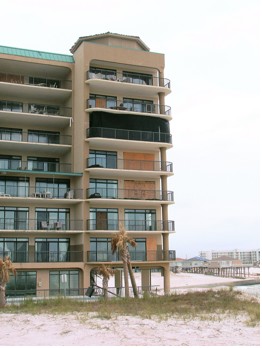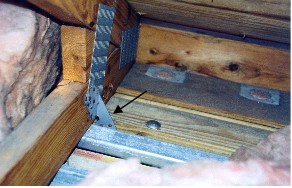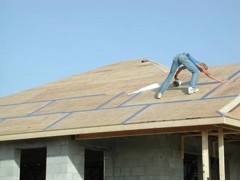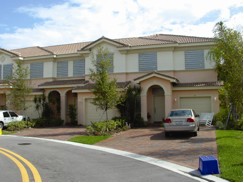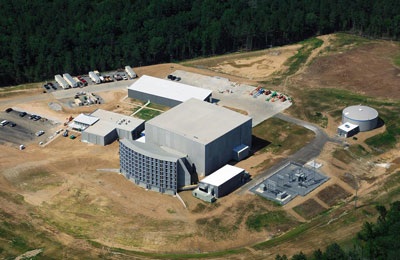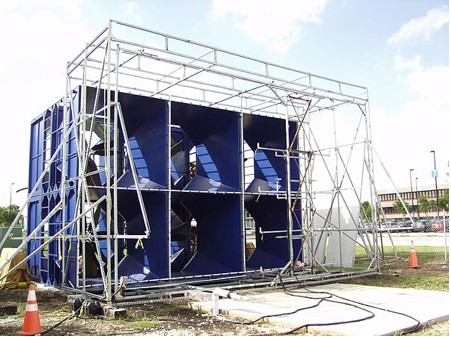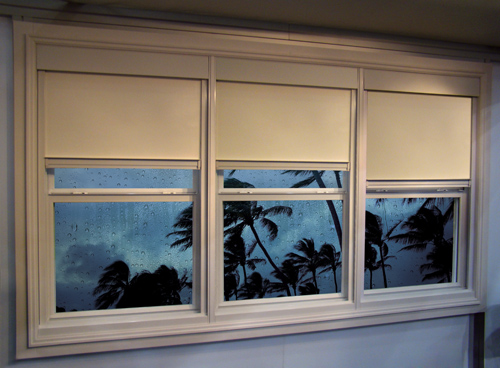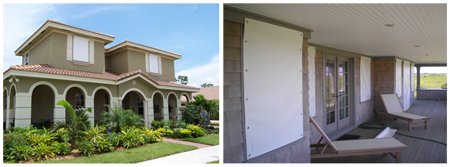The science of hurricane protection has evolved significantly over the past decade, fueled by an intensely destructive period of hurricane activity. The decade of 1996 to 2005 was the one of the most destructive decades in the last century with total hurricane damage of $198 billion. Another factor driving the advancement of hurricane protection technologies was the 2000 International Residential and Commercial Building Codes, which for the first time required the use of impact-resistant windows, doors and other components for homes built in hurricane-prone areas. Subsequent editions of the International Building Codes are adopted every 3 years. A key focus of the modern building code is the exterior of the building, also known as the building envelope. New homes built in Florida within an area where 120 mph winds or greater are expected must have exterior impact protection. Examples of impact protection include impact-resistant windows, hurricane shutters and reinforced doors. Other code changes for 120 mph wind zones include mandatory roof straps that connect the roof of a home through cables all the way to a basement or concrete slab. The building code community is now looking more closely at energy codes and how they interact with building codes to ensure that homes built in the future can provide energy efficiency and impact protection at the same time. Throughout the United States, the prevailing building codes come from the International Code Council (ICC). The ICC was established in 1994 as a non-profit organization designed to consolidate regional codes in the U.S. into a single international code to help ensure uniform building safety around the world. Fifty states and the District of Columbia have adopted the I-Codes at the state or jurisdictional level. Federal agencies including the Architect of the Capitol, General Services Administration, National Park Service, Department of State, U.S. Forest Service, and the Veterans Administration also enforce the I-Codes. The Department of Defense references the I-Codes for constructing military facilities, including those that house U.S. troops, domestically and abroad. Puerto Rico and the U.S. Virgin Islands enforce one or more of the I-Codes. Florida is considered a leader in building code requirements, and therefore, it is prominently referenced in this section. While the development of the modern building code has progressed, millions of homes and commercial buildings in the U.S. were built before the adoption of modern building codes, placing them at great risk for hurricane damage. Technologies exist today to allow older buildings to be retrofitted to become more hurricane resistant. These technologies include reinforcing gabled roofs, creating secondary water barriers in roofs, and installing hurricane straps and clips to ensure a roof stays in place despite high winds.
Major government programs have been launched in recent years to promote widespread retrofits to protect existing homes against hurricanes. Through the My Safe Florida Home program, tens of thousands of Floridians received free home wind inspections to determine what steps could be taken to strengthen homes against hurricanes and earn insurance premium discounts. A similar program was launched in South Carolina and other hurricane prone states are now considering similar initiatives. Key retrofits supported by the My Safe Florida Home program include:
In addition to the My Safe Florida Home program, the State of Florida has published a Hurricane Retrofit Guide. Homeowners and contractors interested in learning about building or retrofitting a hurricane-resistant home that exceeds current minimum building code requirements can consult the Federal Alliance for Safe Homes (FLASH)’s Blueprint for Safety Program™ or the Institute for Business and Home Safety’s (IBHS) Fortified for Safer Living Program™. Emerging Technologies Applied scientific research is taking place on multiple fronts to give engineers, inventors and entrepreneurs new data with which to develop the next generation of hurricane protection products. Examples of this research include: The Institute for Business & Home Safety (IBHS) has built a state-of-the-art, multi-peril applied research and training facility on a 90-acre parcel of land in Chester County, South Carolina. The mission of the facility will be to identify and promote effective methods of property loss reduction and prevention. The facility will be able to subject two story structures to controlled testing that will simulate hurricane conditions. Real-world application of IBHS scientific research findings will lead to more durable, sustainable communities. Research findings also will provide an objective, sound foundation for development of solid public policy (such as enhanced building codes).
In addition to the soon-to-be-opened IBHS facility, other state-of-the-art hurricane research is already taking place on many fronts. At Florida International University, the Renaissance Re Wall of Wind is a cutting-edge weather risk research facility designed to replicate hurricane conditions in a controlled laboratory environment. This has provided scientists and engineers the ability to study the effects of Category 4 winds and rain on full-scale residential structures and building components. The Wall of Wind consists of 6 modular steel rectangular units housing Chevrolet ZZ502 Big Block crate engines. Each engine drives 2 counter-rotating 80 inch propellers, creating a cross-sectional windfield 24 feet wide and 16 feet high.
At the University of Florida (UF), a 2800 hp, 8-fan Hurricane Simulator capable of replicating turbulent wind and rain on a full-size low-rise structure has been constructed. This allows researchers to produce a controlled, full-scale hurricane in a laboratory setting and investigate the performance-based wind engineering of residential structures. This then provides a direct measurement of the cost-effectiveness of pre- and post-construction mitigation measures. Researchers conduct destructive testing of actual residential structures, both as-built and with wind resistant retrofits installed. Testing on-site, as-built complete structural systems allows the inclusion of factors not readily duplicated in a laboratory, such as aging and variations in materials, practice, and quality of construction. The measured failure loads are related to the wind speeds and turbulence characteristics required to generate these loads. The outcomes of the testing provide a vulnerability rating for homes of varying age and construction as a function of wind speed and surrounding terrain. The reduced vulnerability provided by various retrofit strategies is rated in terms of wind speed as well. Destructive tests are designed to evaluate the capacities of structural materials, sub-systems, and connections. Individual fasteners (e.g., sheathing nails) are tested, as well as sub-systems such as the uplift capacity of sheathing panels. Toe-nailed and strapped roof-to-wall connections, wall-to-foundation anchorage, missile impact, and a variety of other component capacities have been tested.
UF researchers are also looking at “green roofs” (vegetative roofs) to assess the availability and variety of these roofing systems, and to also identify methods for wind uplift test protocols for vegetative roof systems. Architects, building owners, and governing code officials are concerned about how the roof systems will withstand both normal and storm-force winds. The lack of rigorous test methods and resultant data increases uncertainty surrounding the performance of green roof systems in high wind environments. Additionally, UF has conducted shutter impact experiments where researchers subjected steel and aluminum storm panel shutters to impact from concrete roof tiles commonly used in hurricane prone regions. The tests were then repeated using lumber, providing a comparison of performance as a function of debris type. Research findings will surely accelerate a number of promising developments on the hurricane protection technology front. Among them: Retrofit Product Expansions
New Products Tackling Water Intrusion Tilt and Turn windows from Europe, which also provide for significant reduction of water intrusion, are being introduced into the U.S. Casement windows and picture windows also offer higher levels of water resistance. While there are some windows in residential structures that do not open, especially in high rise condo towers, many windows in homes open and close which leads to greater water intrusion problems. Among the products that offer superior water resistance are PVC-based pull-down shutter systems. These systems, which are installed permanently and require pre-storm deployment, cover the entire window opening, allowing significantly less water to penetrate around window seals or other small openings. A variation of this shutter system that offers better water resistance than standard metal or plywood shutters is the flexible PVC-based panel shutter. These lightweight shutters are not permanent, however, and require installation prior to a storm.
Green Building Technologies Merging with Impact Protection For example, impact-resistant windows and doors are already offering double-paned insulating glass and new advancements in technology will continue. Spray foam adhesives which have been used for exceptional roof insulation since the 1990s are realizing the enhanced hurricane protection this product provides by helping to secure a roof to the internal building structure and creating a second water barrier, should be roof be blown off. |

